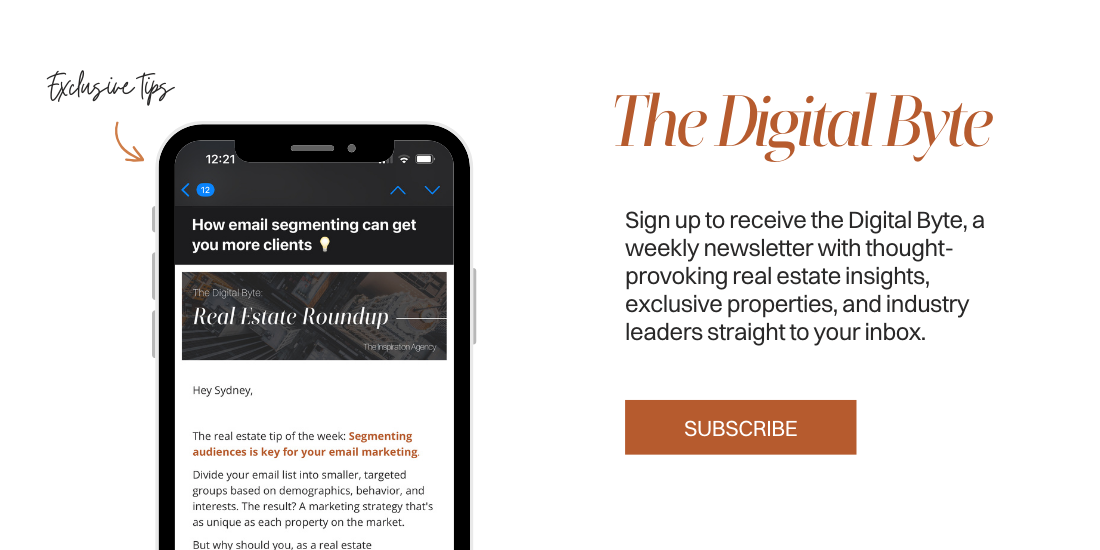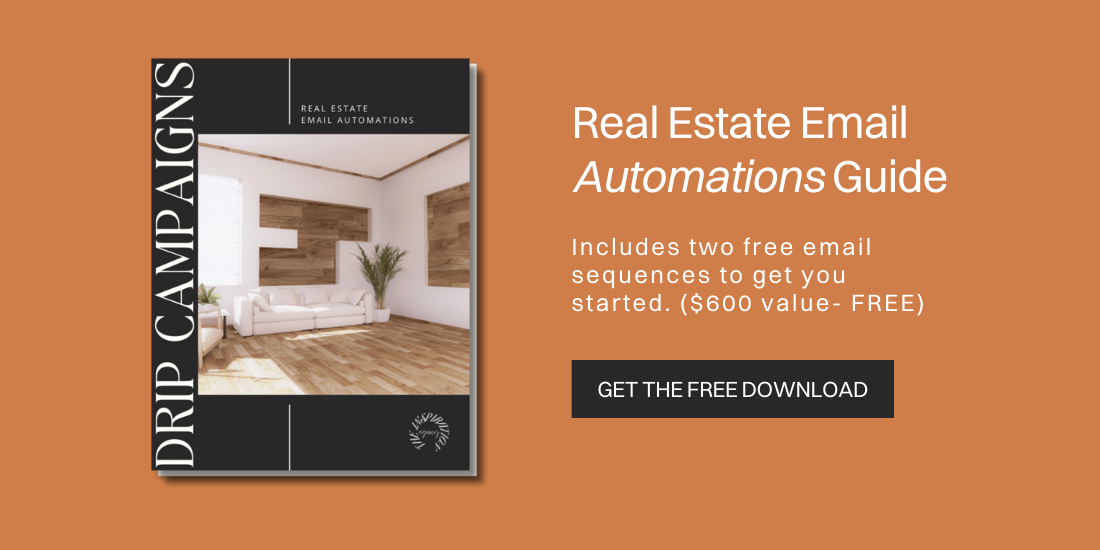7 Reasons Your Real Estate Emails Aren’t Converting (And How to Fix Them)
As a real estate professional, you’ve likely spent time writing emails to connect with buyers, sellers, or investors—but if those emails aren’t converting into leads or appointments, it’s time to reevaluate your strategy. Email marketing is one of the most effective marketing tools, but only if done right.
Here are the 7 most common reasons real estate emails don’t convert—and how to fix them.
1. Your Subject Lines Are Falling Flat
Your subject line is the first impression your email makes—and if it’s not grabbing attention, your emails are probably being ignored or deleted. Think about the emails you actually look forward to receiving. They probably feel like they're coming from a real person, right?
How to Fix It:
Keep it short and compelling. Aim for 6-8 words that spark curiosity or promise value.
Personalize it. Use the recipient’s name or reference their location.
Example: Instead of: "Check Out Our Latest Property"
Try: "This Off-Market Deal Won’t Last (12% ROI Opportunity)"
” Most systems allow you to do this by clicking “custom values.”
Test urgency or exclusivity. Example: “How my client’s San Diego home sold 1 day after being listed.”
A/B test your subject lines to see which ones perform best. When you A/B test, you can send half of your list one subject line and the other half another. You’ll want to look at the metrics to see which one had higher open rates and continue using that style! Tools like MailerLite can help you track open rates.
2. Your Content Isn’t Relevant or Valuable
Let's talk about something that matters: creating content that resonates on a personal level. You know that feeling when you read something and think, "Wow, it's like they're speaking directly to me"? That's what we're aiming for. It's not just about sharing information—it's about creating moments that matter.
Think about the last time you came across an email that was personalized just for you. What made it special? Chances are, it wasn't just informative—it was personal and relevant. That's the sweet spot we're aiming for.
How to Fix It:
Segment your audience. Separate buyers, sellers, and investors into different email lists so you can tailor your messaging.
Offer value. Include tips, guides, or insights they can use.
For example:
Buyers: “5 Things to Look for in Your First Home”
Sellers: “How to Boost Your Home’s Value Before Listing”
Investors: “Top Miami Neighborhoods for Airbnb Rentals in 2025”
Be concise. Avoid overwhelming recipients with too much text. Use bullet points or short paragraphs to make your email easier to digest.
Use data and analytics to understand what type of content your audience engages with most. Numbers don’t lie so make sure you understand your metrics!
3. Your Call-to-Action (CTA) Is Weak or Missing
Let's talk about turning passive readers into active participants in your story. Every email you send should have a clear purpose—and that purpose should be communicated through a strong call-to-action (CTA). If your CTA is vague, buried in the email, or nonexistent, your readers won’t know what to do next.
When done right, your CTA should feel less like a sales pitch and more like an engaging opportunity to connect. We've all seen those standard "Contact Me" or "Learn More" buttons. They're about as exciting as vanilla ice cream without any toppings. Your audience craves something more personal, more engaging, and more meaningful.
How to Fix It:
Be specific. Instead of saying “Contact me,” try “Schedule a free 15-minute consultation.”
Make it easy. Include clickable buttons or links that take your audience directly to the next step, like booking a call, viewing a property, or downloading a guide.
Limit CTAs to one or two. Too many options can confuse your audience. Focus on the main action you want them to take.
Example CTAs:
“Explore New Listings Today”
“Get Your Free Home Valuation Report”
“View Our Investment Property Guide”
4. Your Emails Look Unprofessional
First impressions happen in milliseconds. Your email's appearance isn't just about looking polished—it's about creating an environment that makes people want to spend time with your words. It's like the difference between a rushed coffee meet-up and a thoughtful conversation in a cozy café.
A poorly designed email can immediately turn off potential clients. Emails that are cluttered, difficult to read, or not mobile-friendly can make your audience question your professionalism.
How to Fix It:
Use a clean, branded design. Stick to your brand colors, fonts, and your logo to create a polished, cohesive look.
Optimize for mobile. Over 55% of emails are opened on mobile devices, so ensure your emails look great on any screen.
Include high-quality visuals. Use professional photos of properties, infographics, or branded images to make your emails visually appealing. Use free tools like Canva or Unsplash to find stock photos!
5. You’re Not Following Up
One email rarely gets the job done. If you’re not sending follow-up emails, you’re missing out on opportunities to build trust and stay top-of-mind with potential clients.
Think about your closest relationships. They developed through consistent interaction, shared experiences, and gradual trust-building. Your email strategy should mirror this natural progression of relationship building.
How to Fix It:
Create an email sequence. Create automated follow-up emails that nurture leads over time. Example:
Email 1: Provide a valuable resource, like a market trends report.
Email 2: Share client success stories or testimonials.
Email 3: Include a strong CTA to schedule a call or meeting.
Be persistent but respectful. Space out your follow-ups over several days or weeks to avoid overwhelming your audience.
Leverage automation. Grab our Real Estate Email Automations Guide for more support!
6. Don’t Use Your Brokerage Template
Using pre-made email templates provided by your brokerage might seem convenient, but in reality, it can hinder your ability to stand out in a crowded inbox and build meaningful relationships with your audience.
While these templates can provide a basic structure, they often lack personalization and fail to reflect you—your unique voice, approach, and connection to your clients. Here’s why relying on brokerage templates can do more harm than good.
How to Fix It:
Customize your emails to reflect your personal brand. Incorporate your tone, style, and unique value proposition.
Use templates as a starting point, but always add a personal touch or tweak the design to stand out.
Highlight your expertise and local market knowledge to build trust and authority.
7. You’re Not Personalizing the Content
If your emails are only focused on listings, stats, or transactional information, they can come across as boring or uninteresting to your audience. While those details are important, they shouldn’t be the only thing in your emails.
People want to connect with you—the person behind the business. Your subscribers don't want another sanitized business update - they want to know the human behind the emails. The one who’s a movie fanatic, has strong opinions about coffee, or can't stop talking about that new hiking trail they discovered.
Sharing a bit about yourself or your interests can make your emails more relatable and memorable. Whether you love baking, are part of a local club, or have a funny story about your latest travels, weaving in personal details can help build trust and create a deeper connection with your audience. Remember: 80% of your email should focus on content that helps your audience relate to you as a person. The remaining 20% can tie back to your professional expertise, but the focus here is connection—not selling.
How to Fix It:
Focus on making your emails personal by weaving in elements of your life:
Talk about hobbies you enjoy—whether it’s gardening, trying new restaurants, or taking your dog to the park.
Recommend books, movies, or podcasts you’re loving right now.
Share life hacks or tips that your audience can relate to, like how you organize your busy schedule or your favorite go-to weeknight meal.
By making your emails feel personal and conversational you’re building a connection- not selling yourself.
Conclusion
Building meaningful relationships with your audience goes beyond simply talking about what you do—it’s about showing them who you are. By sharing content that resonates on a personal level, you’re creating a bridge that connects you to their lives in ways that extend far beyond real estate.
So, as you think about your emails, ask yourself: Am I just marketing my business, or am I building a relationship and providing unique content? The more you focus on the latter, the more meaningful your impact will be—not just as a real estate agent, but as someone they genuinely want to work with.
At Pivota Marketing, we specialize in helping real estate professionals create email campaigns that drive results. If you want your real estate business to scale, we’ll help you create a digital strategy that converts.
Want help with your email marketing? Schedule a free consultation with Pivota Marketing today and let’s turn your email campaigns into lead-generating powerhouses.



